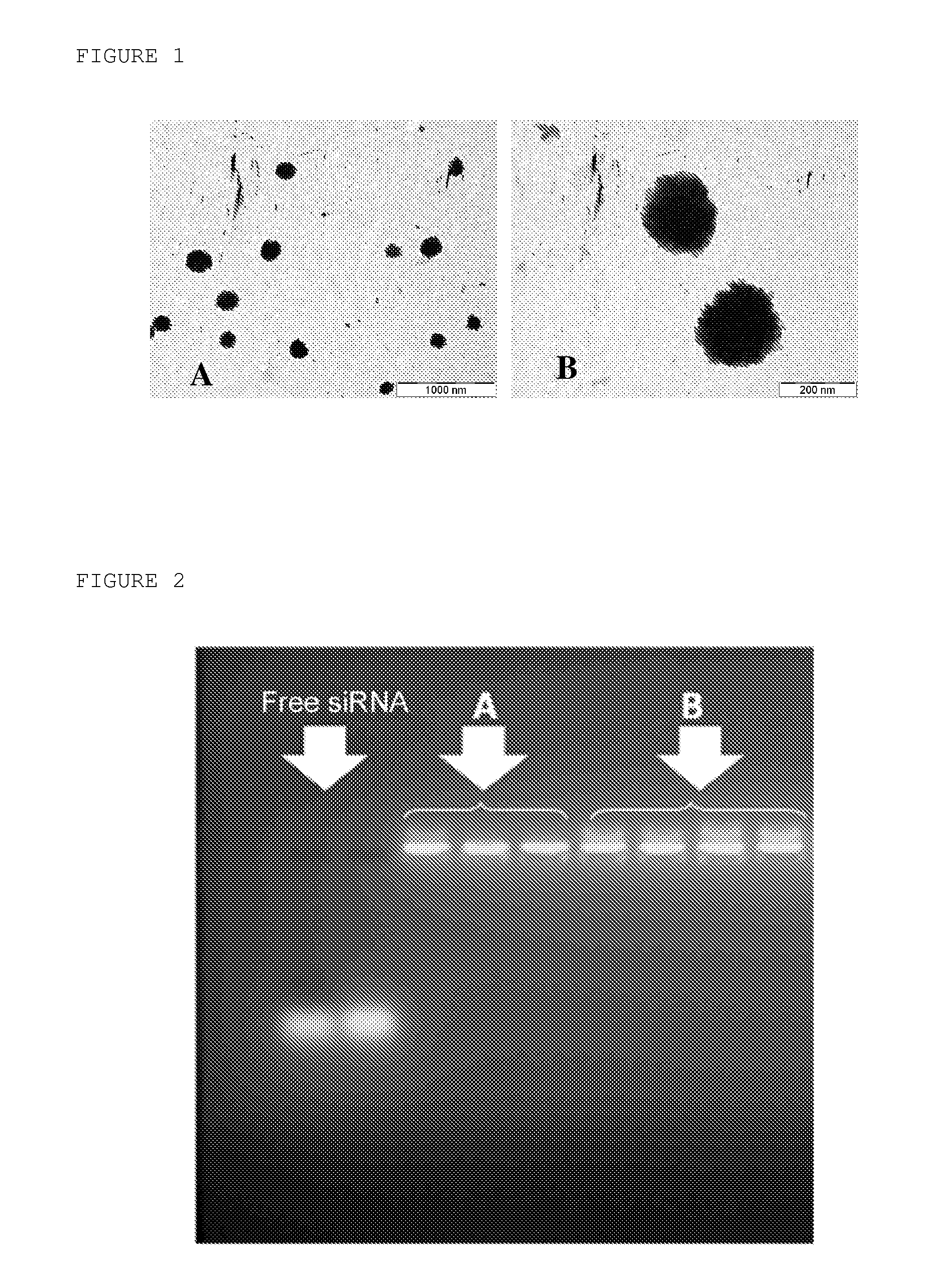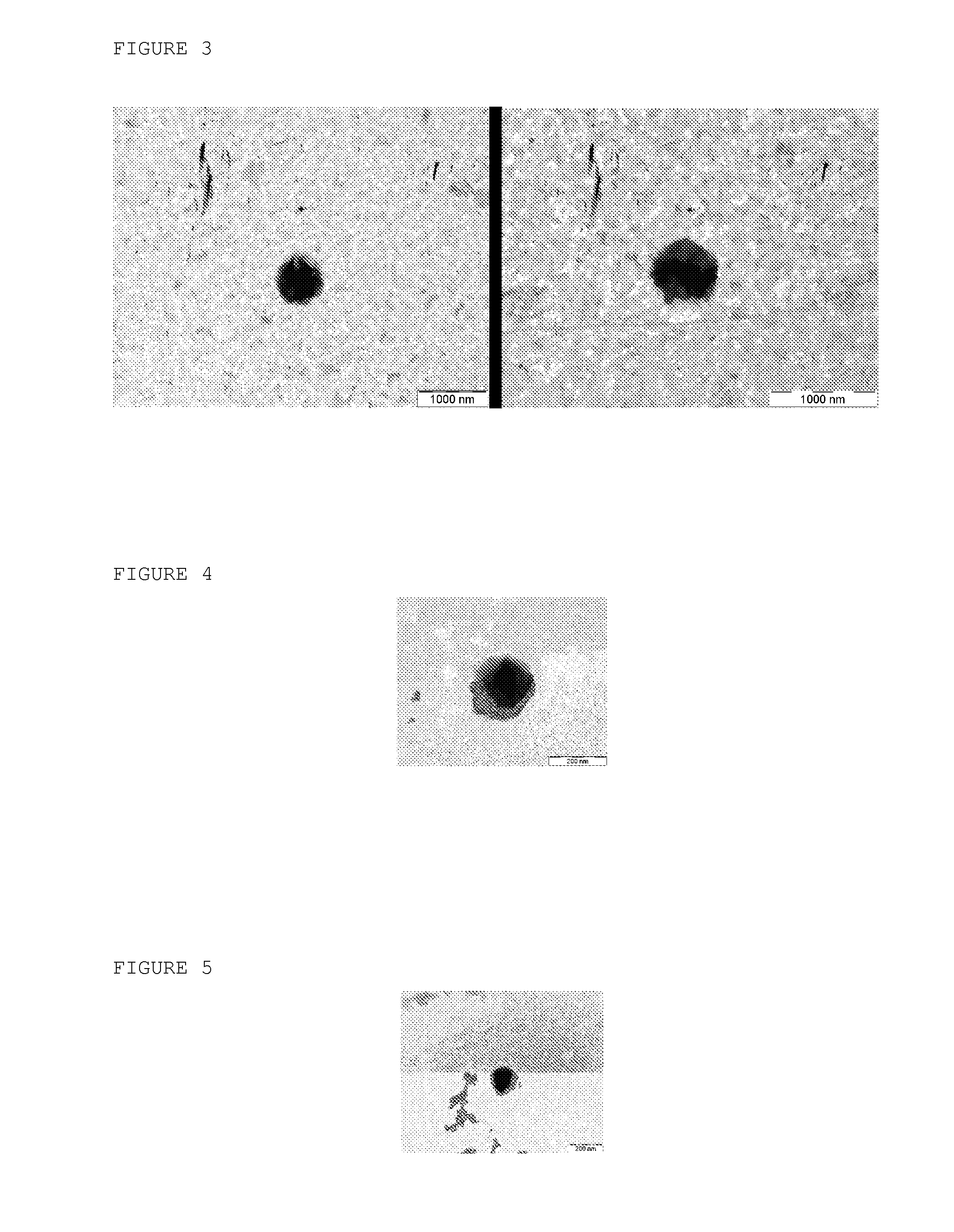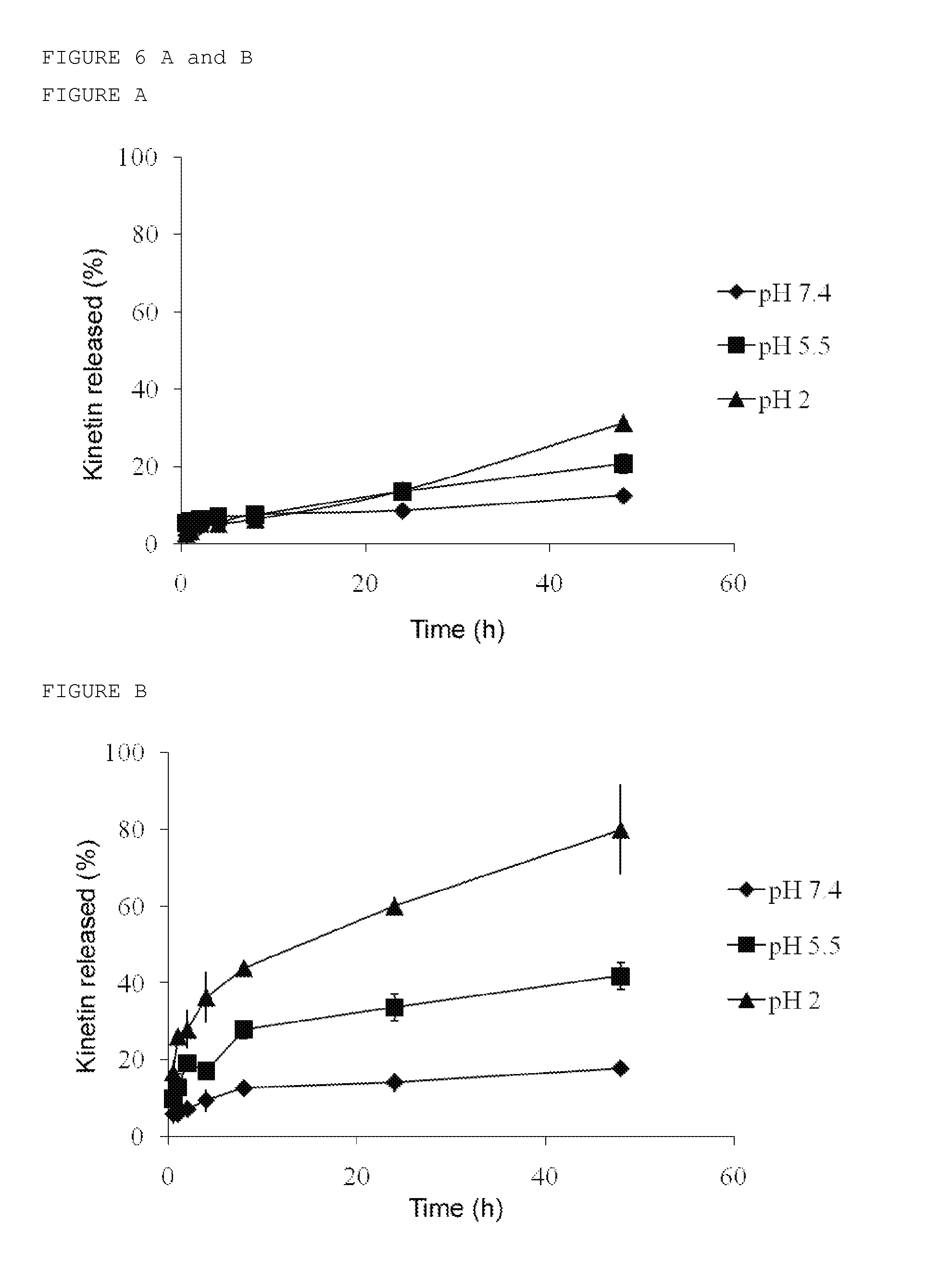Nanoparticulate systems prepared from anionic polymers
- Summary
- Abstract
- Description
- Claims
- Application Information
AI Technical Summary
Benefits of technology
Problems solved by technology
Method used
Image
Examples
example 1
Preparation of Nanoparticles Based on Dextran Sulfate Associating a Bioactive Molecule (DNA Plasmid)
[0149]Nanoparticles were prepared from dextran sulfate according to the aforementioned method. A bioactive hydrophilic macromolecule was incorporated in the composition thereof, selecting for this purpose genetic material, specifically the plasmid, pEGFP. It is a negatively charged macromolecule so it was incorporated together with dextran sulfate, which also has a negative charge, to prevent the occurrence of interactions prior to the formation of the particles. The cationic spermine molecule was used as the cross-linking agent.
[0150]To that end, aqueous solutions of dextran sulfate (2 mg / mL) in milli-Q water were prepared. An aqueous solution of spermine (0.6-0.8 mg / mL) in milli-Q water was used as the cross-linking agent. The corresponding genetic material was incorporated at a proportion of 2.5% by mass. The bioactive molecule was incorporated to the solution of dextran sulfate an...
example 2
Modulation of the Surface Electric Charge of Nanoparticles Prepared from Dextran Sulfate Associating a Bioactive Molecule by Means of Combining with Another Anionic Polymer: Combination of Dextran Sulfate and Chondroitin Sulfate and the Association of a Bioactive Molecule (Protein)
[0151]Dextran sulfate nanoparticles were prepared according to the aforementioned method but by adding an anionic polymer excipient, chondroitin sulfate, for the purpose of modulating the characteristics of the nanoparticles, specifically the surface electric charge. A bioactive molecule was further incorporated in the composition, selecting for this purpose a protein, specifically albumin. It is a negatively charged macromolecule, so it was incorporated together with dextran sulfate, which also has a negative charge, to prevent the occurrence of interactions prior to the formation of the particles. Cationic spermidine was used as the cross-linking agent.
[0152]To that end, solutions of dextran sulfate (5 m...
example 3
Preparation of Nanoparticles Based on Heparin and their Association to an Active Ingredient
[0153]Heparin nanoparticles were prepared according to the aforementioned method.
[0154]A bioactive hydrophilic macromolecule was incorporated in the composition thereof, selecting for this purpose genetic material, specifically the plasmid, pEGFP, or interfering RNA (siRNA), the siGAPDH. They are negatively charged macromolecules in both cases, so they were incorporated together with the heparin, which also has a negative charge, to prevent the occurrence of interactions prior to the formation of the particles. To that end, aqueous solutions of heparin (1 mg / mL) in milli-Q water were prepared. An aqueous solution of spermine (0.75 mg / mL) in milli-Q water was used as the cross-linking agent. The corresponding genetic material was incorporated at a proportion of 5% by mass. The bioactive molecule was incorporated to the solution of heparin and the resulting solution was mixed with the cross-link...
PUM
| Property | Measurement | Unit |
|---|---|---|
| Percent by mass | aaaaa | aaaaa |
| Length | aaaaa | aaaaa |
| Particle size | aaaaa | aaaaa |
Abstract
Description
Claims
Application Information
 Login to View More
Login to View More - R&D
- Intellectual Property
- Life Sciences
- Materials
- Tech Scout
- Unparalleled Data Quality
- Higher Quality Content
- 60% Fewer Hallucinations
Browse by: Latest US Patents, China's latest patents, Technical Efficacy Thesaurus, Application Domain, Technology Topic, Popular Technical Reports.
© 2025 PatSnap. All rights reserved.Legal|Privacy policy|Modern Slavery Act Transparency Statement|Sitemap|About US| Contact US: help@patsnap.com



